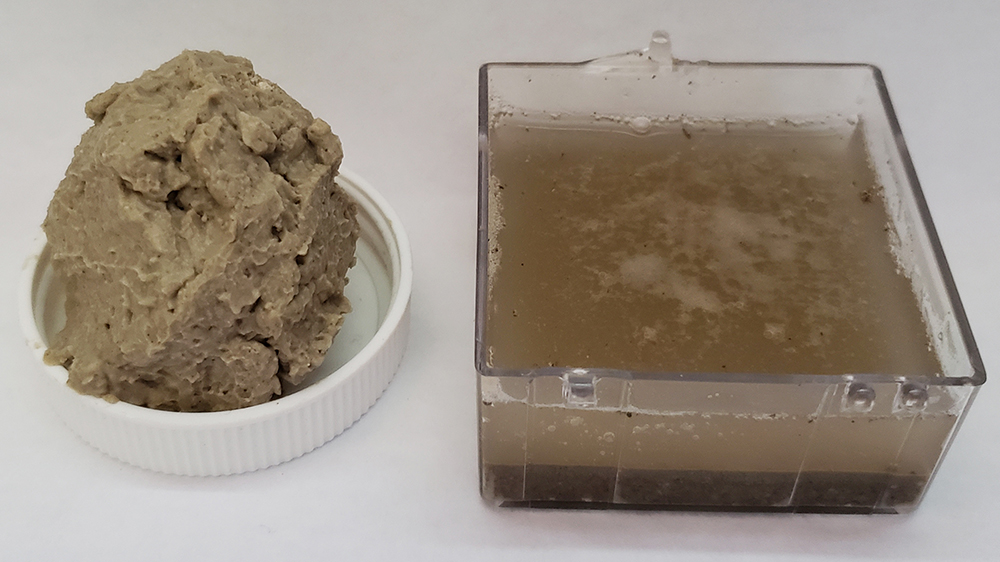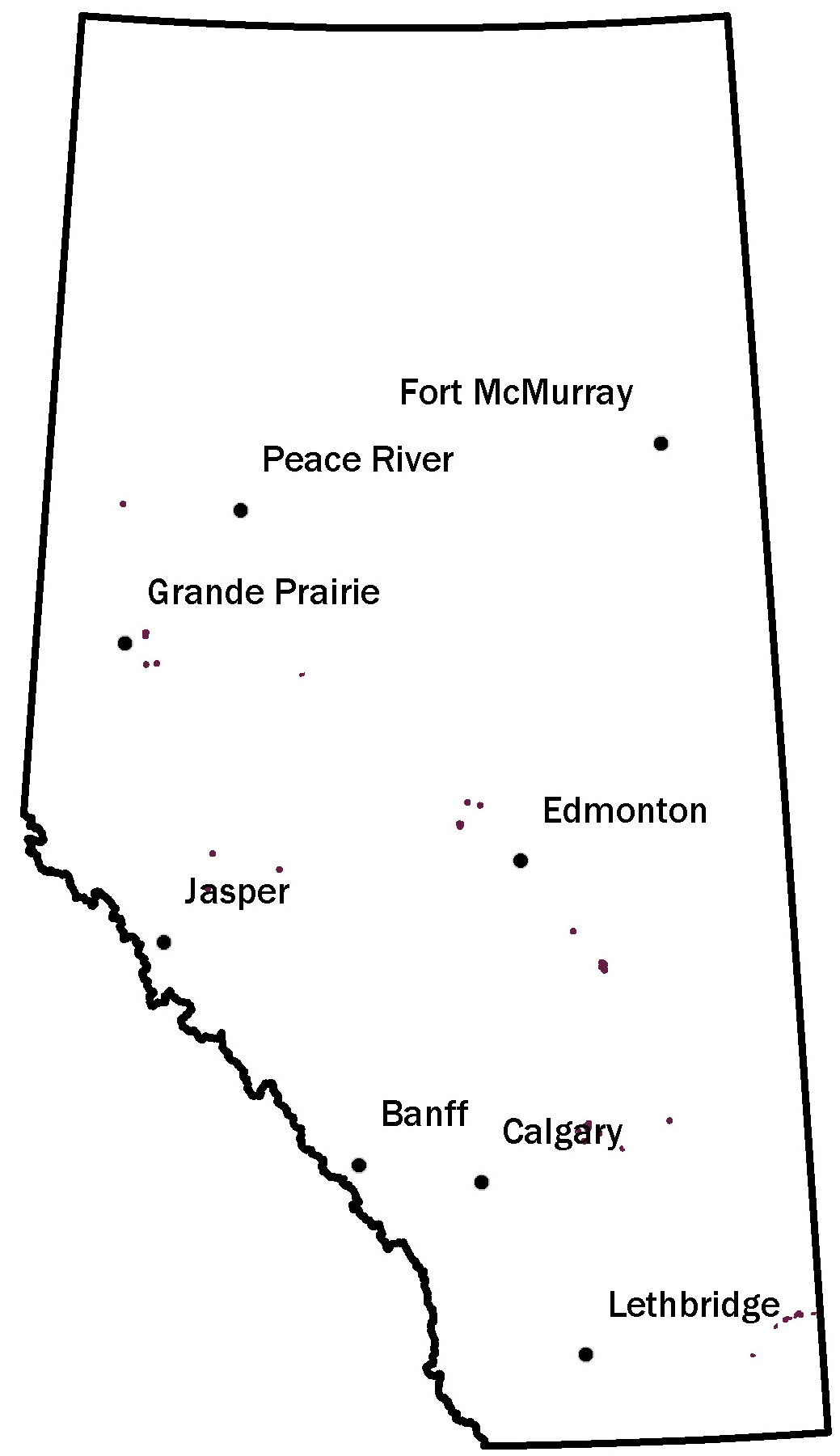![]()
Dark bentonite at the base of hoodoos near Drumheller, Alberta

Left: One tablespoon of bentonite mixed in two tablespoons of water
Right: One tablespoon of very fine sand and clay mixed in two tablespoons of water
Composition
Bentonite is a natural material made of clay minerals formed by the alteration of volcanic ash and tuff. The clay minerals have different amounts of calcium and sodium. Bentonite may contain small amounts of other minerals such as quartz, feldspar, pyroxene, biotite, and calcite.
Age and Formation
In southern Alberta, bentonite is found in marine and terrestrial sediments from 67 - 75 million years ago. In the northwestern part of the province it's found in terrestrial sediments from 67 - 100 million years ago. During these times, volcanic ashes from active volcanoes in British Columbia and other parts of western North America, traveled on the wind into Alberta. As time passed, some of the ashes were chemically altered to become bentonite.
Important properties
Bentonite can be crushed to a fine powder, is soft, and feels soapy when wet. If rich in sodium, the bentonite absorbs the water and swells; if rich in calcium, it does not swell in water. Wet bentonite becomes less viscous when stress is applied to it.
Uses
Bentonite is a common thickener for paint, toothpaste, and foods. It is used to make pottery glazes, drilling mud, cosmetics, nail polish, and sunscreen. It is a filter for clarifying wine, fruit juices, and oils. There is documentation of the use of bentonite as soap by Indigenous Peoples and Hudson Bay Company employees. Bentonite was mined in Alberta in the past.
It’s a Fact!
If you are hiking on exposed ground and come across an area that looks like popcorn, it may be bentonite. Be careful! Bentonite is slippery when wet.
Discover!
Meet UAlberta's volcanic ash researcher Dr. Britta Jensen
“Alberta Newsletter” on the bentonite plant at Rosalind, Alberta
Explore the volcanoes of Canada
Where to find bentonite
